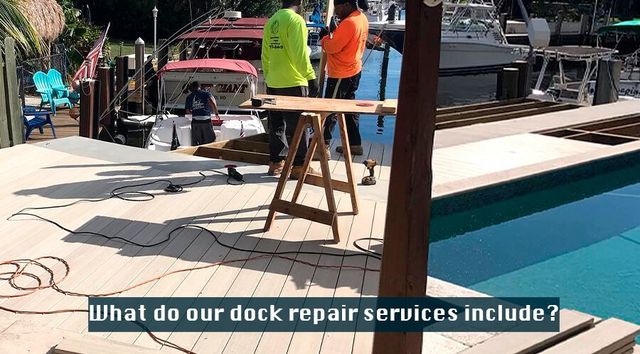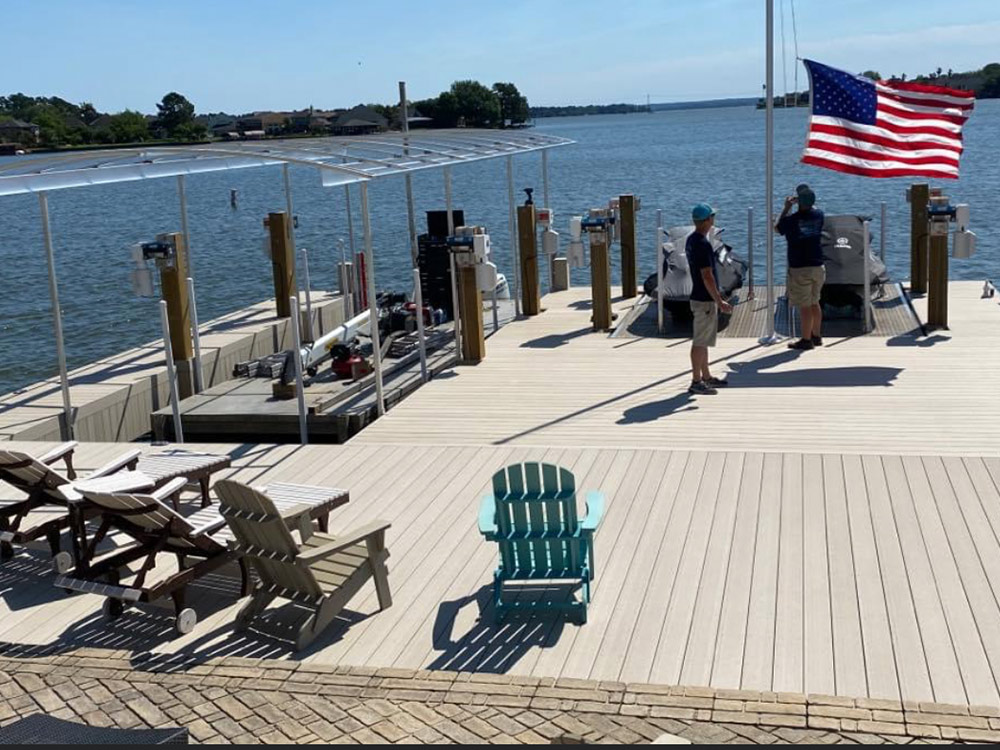Top Signs You Required Specialist Dock Repairs This Season
Top Signs You Required Specialist Dock Repairs This Season
Blog Article
Reliable Dock Repair Techniques: Making Certain Structural Integrity
Ensuring the structural stability of docks through effective repair work methods is vital for the durability and security of marine facilities. This entails a multi-faceted strategy beginning with detailed assessments utilizing sophisticated technologies like finder tools and remotely operated lorries (ROVs) to detect both noticeable and concealed damages. Consequently, selecting the appropriate repair products, such as corrosion-resistant alloys and composite products, is essential for sturdiness. Structural support techniques, including the execution of cross-bracing systems and load-distribution plates, play a crucial function in mitigating anxiety points. The value of these methods comes to be obvious when exploring sophisticated repair approaches and preventative maintenance approaches.
Evaluating Dock Damages
Examining dock damage is a critical initial step in ensuring the architectural integrity and safety of any kind of docking facility. This preliminary analysis involves an extensive assessment to recognize both concealed and noticeable damages. Key elements to take a look at consist of the dock's structure, pilings, outdoor decking, and hardware. Each component should be inspected for indicators of wear, rot, deterioration, or other forms of degradation that could compromise the structural stability.
Architectural engineers or qualified inspectors usually do these evaluations utilizing specialized tools and methods. Underwater inspections could utilize sonar tools or from another location operated vehicles (ROVs) to detect immersed damages. Over water, aesthetic inspections are matched by utilizing moisture meters and other analysis devices to discover underlying issues not immediately visible to the nude eye.

Choosing Repair Service Products
Picking the ideal repair materials is a critical action in the dock repair procedure, one that straight affects the longevity and performance of the repaired framework. Product selection must be driven by elements such as environmental conditions, load-bearing demands, and compatibility with existing dock components. As an example, wood is a standard option for anchors because of its natural durability and aesthetic appeal. Nonetheless, choosing the ideal kind of wood, such as pressure-treated lumber or naturally rot-resistant varieties like cedar or teak, is essential to withstand aquatic settings.
Along with wood, composite materials are progressively popular because of their resilience and low maintenance needs. Compounds, commonly made from a blend of plastic and wood fibers, provide superb resistance to rot, insects, and UV damages. For steel anchors, picking corrosion-resistant alloys such as galvanized steel or marine-grade aluminum is necessary to stop corrosion and guarantee structural stability in saline water problems.
Epoxy materials and marine-grade sealers are important for repairing splits and securing joints, supplying a water resistant barrier and boosting the dock's general toughness. By thoroughly choosing premium products, dock repair services can achieve resilient outcomes, therefore securing versus future deterioration and making sure secure, trusted usage.
Architectural Reinforcement Techniques
Efficient architectural support techniques are important in ensuring the stability and long life of dock fixings. This technique is specifically efficient for anchors subjected to hefty tons or extreme ecological conditions.
Another important technique is the application Visit Your URL of fiber-reinforced polymers (FRP) These materials use high strength-to-weight proportions and outstanding resistance to rust, making them ideal for enhancing wood or concrete anchors. FRP can be used in strips or sheets and adhered with epoxy materials to boost structural honesty.
Bracing and securing systems likewise play a critical duty in architectural support. Cross-bracing, using metal or wooden beams, can counteract side forces, lowering swaying and movement. Anchoring systems, such as helical piers or driven heaps, supply a stable structure by moving lots to much deeper, much more stable soil layers.
Last but not least, the combination of load-distribution plates can aid distribute weight more equally across the dock's surface area, mitigating local stress points. These strategies collectively make certain that docks stay risk-free and durable, capable of standing up to the rigors of their operational environment.
Advanced Repair Service Techniques

An additional sophisticated technique involves underwater welding, which permits fixings to be performed without the requirement to dewater the location. This method is particularly beneficial for addressing architectural issues in submerged dock parts, making sure very little disturbance to procedures. Enhanced welding strategies, combined with robotic systems, supply precision and integrity, thereby extending the life-span of the dock.
In addition, cathodic security systems are applied to stop rust in metallic dock frameworks. By utilizing sacrificial anodes or satisfied existing systems, these techniques effectively alleviate the electrochemical processes that lead to material wear and tear.
Lastly, advanced tracking innovations, such as structural health and wellness tracking (SHM) systems, provide real-time information on the problem of dock structures. These systems allow proactive upkeep and prompt treatments, ultimately making certain the long-lasting structural integrity of the dock.
Upkeep and Avoidance
Maintenance and avoidance are basic ideas that underpin the durability and safety of dock frameworks. Regular inspections are critical, enabling early detection of wear and tear, prospective weaknesses, and environmental influences. An aggressive method, involving routine look for corrosion, rot, and architectural changes, alleviates costly repair services and prolongs the dock's operational life.
Safety nets should include using protective coatings to steel components to safeguard against rust and using cured timber to withstand decay. In addition, making sure appropriate water drainage and air flow can discover this protect against water build-up, which is a common cause of structural destruction. Incorporating top quality products and adhering to maker standards during construction and repair phases additionally play essential functions in improving resilience.

Training employees in dock upkeep finest practices ensures constant application of safety nets. Leveraging technological advancements, such as useful source drones for assessments and sensing units for real-time monitoring, can further boost maintenance efforts. By prioritizing maintenance and avoidance, dock owners can make sure structural honesty, operational safety and security, and affordable administration over the dock's life expectancy.
Verdict
In conclusion, preserving the architectural stability of aquatic centers demands detailed dock repair service strategies. Detailed evaluations utilizing advanced devices uncover both noticeable and concealed damages, while the option of suitable repair products enhances resilience. Implementing architectural reinforcement approaches addresses tension factors properly. Advanced repair strategies, coupled with routine upkeep methods, guarantee the dock remains functional and safe under varied environmental problems. Adopting these strategies dramatically prolongs the lifespan and functionality of aquatic infrastructure.
Making sure the architectural honesty of docks with efficient fixing methods is critical for the durability and security of aquatic centers.Choosing the ideal repair work products is a critical step in the dock repair procedure, one that directly influences the longevity and performance of the repaired structure.Reliable structural support strategies are vital in making certain the security and long life of dock repairs. By focusing on maintenance and avoidance, dock owners can ensure architectural stability, operational safety, and cost-effective management over the dock's lifespan.
In final thought, preserving the architectural integrity of aquatic centers requires extensive dock fixing methods.
Report this page